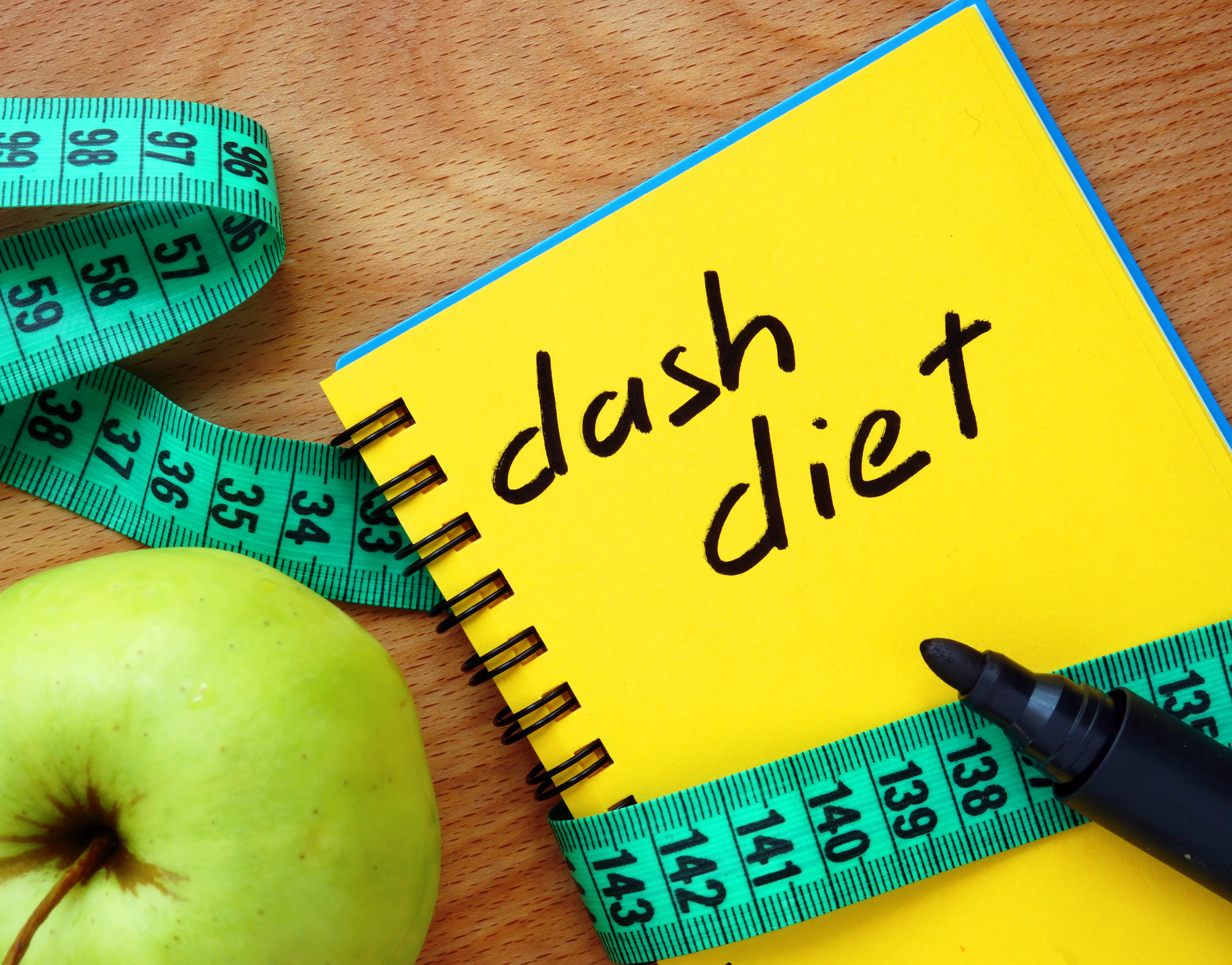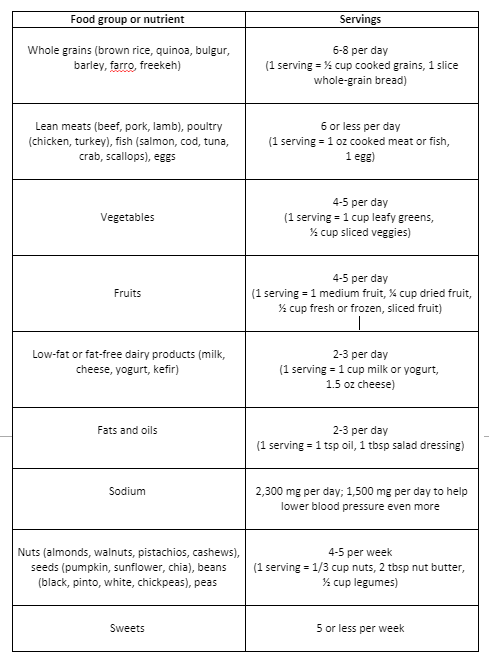The DASH Diet 101
By Lizzie Streit, MS, RDN, LD
The Dietary Approaches to Stop Hypertension (DASH) diet is a style of eating based on fruits, vegetables, whole grains, and other healthful foods. It was created to help prevent and treat high blood pressure, but also helps with weight loss and other health issues.
The guidelines of the DASH diet encourage balanced, nutritious eating without unnecessary restrictions and rules.
In fact, the DASH diet is consistently named one of the top diets by the U.S. News and World Report, which ranks diets based on nutrition, safety, and effectiveness in promoting weight loss and protecting against diabetes and heart disease. It was considered the #1 best eating pattern out of 41 diets in 8 of the past 9 years!
So what makes the DASH diet so great? And how closely does Healthy For Life Meals align with it? Read on to learn about the main principles and benefits of this diet, and how we make our meals DASH-friendly!
History of the DASH Diet
The DASH diet evolved as the result of research on the effects of dietary patterns on blood pressure in the 1990s.
Based on epidemiological studies, researchers concluded that a high-fiber diet that’s rich in certain minerals is associated with lower blood pressure. Thus, they set out to develop a diet that would “stop hypertension” (1).
Specifically, the DASH style of eating was designed to be high in fruits, vegetables, whole grains, low-fat dairy products, fiber, potassium, calcium, and magnesium, and low in total fat, saturated fat, sodium, and sugar (1, 2).
In a clinical trial that tested the effects of the DASH diet over two months, researchers found that following this eating pattern significantly reduced systolic and diastolic blood pressure by 5.5 and 3.0 mm hg, respectively, more than the control diet (which was low in fruits, vegetables, and dairy) (3).
After this initial research, experts continued to explore the possible health benefits of the DASH style of eating. Now, decades after its development, the DASH diet is recognized as one of the most nutritious and beneficial eating patterns.
DASH Diet Principles
The DASH diet is a flexible style of eating that does not include strict rules or unrealistic restrictions.
Instead, it recommends meals based on vegetables, fruits, and whole grains that include low-fat dairy products, fish, poultry, beans, and nuts and limit fatty cuts of meat, full-fat dairy, coconut and palm oils, and sugar-sweetened beverages and foods.
You may notice that the DASH diet principles are closely related to the nutrition recommendations set forth by the Academy of Nutrition and Dietetics, the USDA Dietary Guidelines, and the American Heart Association.
The DASH diet also suggests daily and weekly servings of specific foods and nutrients. Below is a table that outlines these suggestions, based on a 2,000 calorie per day diet (2):
In addition, DASH recommends choosing a variety of foods that are rich in potassium, calcium, magnesium, fiber, and/or protein, such as:
Potassium: tomatoes, avocado, banana, kiwi, potatoes
Calcium: dairy products, leafy greens, figs, almonds, soy foods, lentils
Magnesium: leafy greens, black beans, dark chocolate, pumpkin seeds, whole grains
Fiber: fruits, vegetables, nuts, seeds, legumes
Protein: eggs, meats, poultry, fish, beans, nuts, seeds, soy products
Increasing consumption of these nutrients, while limiting sodium intake, may be particularly helpful in reducing blood pressure.
Benefits of the DASH Diet
Blood pressure and heart health
Several clinical trials have shown that following the DASH diet helps lower blood pressure in individuals with hypertension and normal blood pressure (4, 5).
The blood pressure-lowering effects of the DASH diet are likely due to its emphasis on limiting sodium intake. However, the increased intake of other nutrients, such as magnesium, calcium, and potassium, also plays a role (6, 7).
But the benefits of the DASH diet for your heart don’t stop there! Following this style of eating may lower “bad” LDL cholesterol and increase “good” HDL cholesterol, and therefore decrease your risk of developing heart disease (8).
Weight loss
The DASH diet may also help with weight loss. Since this style of eating encourages nutrient-dense whole foods and limits high-fat and sugary foods, most people who follow the DASH diet naturally decrease their calorie intake.
Eating a balanced diet that’s based on fiber-filled plant foods and lean proteins also helps improve satiety, making you less likely to reach for empty calories in between meals.
In fact, clinical trials have shown that following the DASH diet may lead to reductions in both body weight and waist circumference (8, 9).
Blood sugar and diabetes
Finally, the DASH eating pattern may help in the management of type 2 diabetes.
One study in 31 adults with type 2 diabetes found that the following the DASH diet for 8 weeks led to a significant decrease in fasting blood sugar and hemoglobin A1c (a measure of average blood sugar over 3 months) (8).
Sample Day of DASH Meals
To see the DASH diet recommendations in action, check out this sample day of DASH-friendly meals:
Breakfast: 2 eggs, 1 cup broccoli and onion, 1.5 oz cheese, 1 medium apple
Lunch: 2 cups leafy greens, 1 cup mixed veggies, ¼ cup dried cranberries, ½ cup quinoa, ½ cup black beans, 2 tbsp salad dressing
Dinner: 3 oz lean chicken breast, 1 cup brussels sprouts cooked in 1 tsp olive oil, 1 cup brown rice
Snacks: 1/3 cup pistachios, ½ cup grapes, 1 cup low-fat yogurt
Since the DASH diet does not recommend any specific restrictions, you can choose from a variety of delicious whole foods while following this eating pattern.
Healthy For Life Meals and the DASH Diet
At Healthy For Life Meals, we closely follow the principles of this diet that is considered one of the best styles of eating year after year.
Specifically, we incorporate the guidelines of the DASH diet into our meals by:
Emphasizing fruits, vegetables, and whole grains. You will find a variety of these foods featured every day on our menu, in meals such as oatmeal, salads, roasted veggies, burrito and grain bowls, fruit and yogurt dishes, and more.
Reducing sodium. Our 1200 calorie meal plan has less than 1500 mg of sodium per day (on average), and our 1500 calorie and 2000 calorie vegetarian plans fall below or meet the recommended 2300 mg sodium limit per day. We avoid highly processed ingredients that contribute excess salt.
Limiting added sugar. You won’t find sugary foods or beverages on our menus! We carefully source ingredients with no or very little added sugar, and incorporate natural sugars from fruits and other foods instead.
Incorporating lean proteins and dairy. Healthy For Life Meals feature lean cuts of poultry and meat, fish, eggs, and low-fat dairy products.
Adding in nuts, seeds, and legumes. These high-fiber foods make their way into several of our meals, including soups and stews, oatmeals, stir fries, and more.
Just like the DASH diet, our chef-prepared meal plans emphasize balanced eating and discourage strict rules or restrictions. We pride ourselves on developing complete meals that incorporate fresh foods and taste delicious at the same time!
If you’re looking to decrease blood pressure, lose weight, or feel better overall, following an eating pattern similar to the DASH diet (like our meal plans) can help.
Note from Healthy For Life Meals: Get started by choosing one of our 1200, 1500, or 2000 calorie meal plans today to enjoy the best healthy meal plan that incorporates fruits, vegetables, whole grains, and lean proteins, and limit excess salt and sugar. Order today for next week and enjoy low sodium meal delivery right to your door.


